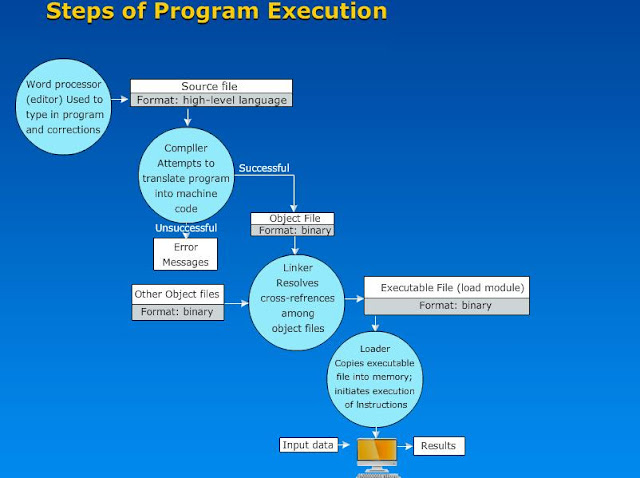What is a Program?
A computer program is sequence of instructions, written to perform a specified task with a computer.
Characteristics of a Good Program
Maintainability: is the ease with which changes can be made to satisfy new requirements or to correct deficiencies.
Re usability: is the ease with which software can be reused in developing other software.
Reliability: is the frequency and criticality of software failure, where failure is an unacceptable effect or behavior occurring under permissible operation conditions.
Portability: is the ease with which software can be used on computer configurations other than its current one.
Efficiency: is the degree with which software full fills its purpose without waste of resources.
Programming Language
Computers can understand only machine language that consists of binary numbers 0's and 1's.
Programming languages are user friendly with the computer like English. They help programmers, to give a set of instructions to the computer.
Natural Language vs Programming Language
The natural language is context dependent whereas, a programming language is a formal language designed to communicate instructions to a machine
Programming Languages
Programming languages can be used to create programs that control, the behaviour of a computer machine. There are three types of programming languages that are used to write programs.
Machine Languages: This is the basic language that a computer understands. This language consists of 0's and 1's.
A combination of these two digits represent characters or numbers and this is called the binary language.
Assembly Languages: It is a processor specific language. This language consists of codes like ADD (addition), MOV(move), SUB(subtraction) to represent instruction. These codes are called mnemonics and they are used to write programs. This language is much easier when compared to machine language, but the codes have to be memorized.
High Level Languages: These languages are close to the English language and it allows people to easily write programs in their own environment. High-Level languages are used mainly as symbolic of English words and many machine language instructions, this translation is done by translators.
Example: C, C++, C#, Java etc.
| Machine Language | Assembly Language | High-Level Language |
Since, it is the basic language of the computer, it does not require any translation. Hence, ensures better machine efficiency and the programs run faster.
Needs a lot of skill, as instructions are lengthy and complex. Thus it takes more time to program.
|
A program called assembler is required to convert the program in to machine language.
|
A program called a compiler or an interpreter is required to convert the program in to machine language.
|
Needs a lot of skill, as instruction are lengthy and complex. Thus it takes more time to a program
|
Simpler to use when compared to machine language, but the codes should be memorized. So, it takes less time to develop the programs compared to machine language.
|
Easiest of all. It takes less time to develop program and hence, ensures better program efficiency.
|
Steps of Program Execution
Entering, translating and running a high-level language program.

Post a Comment
Post a Comment